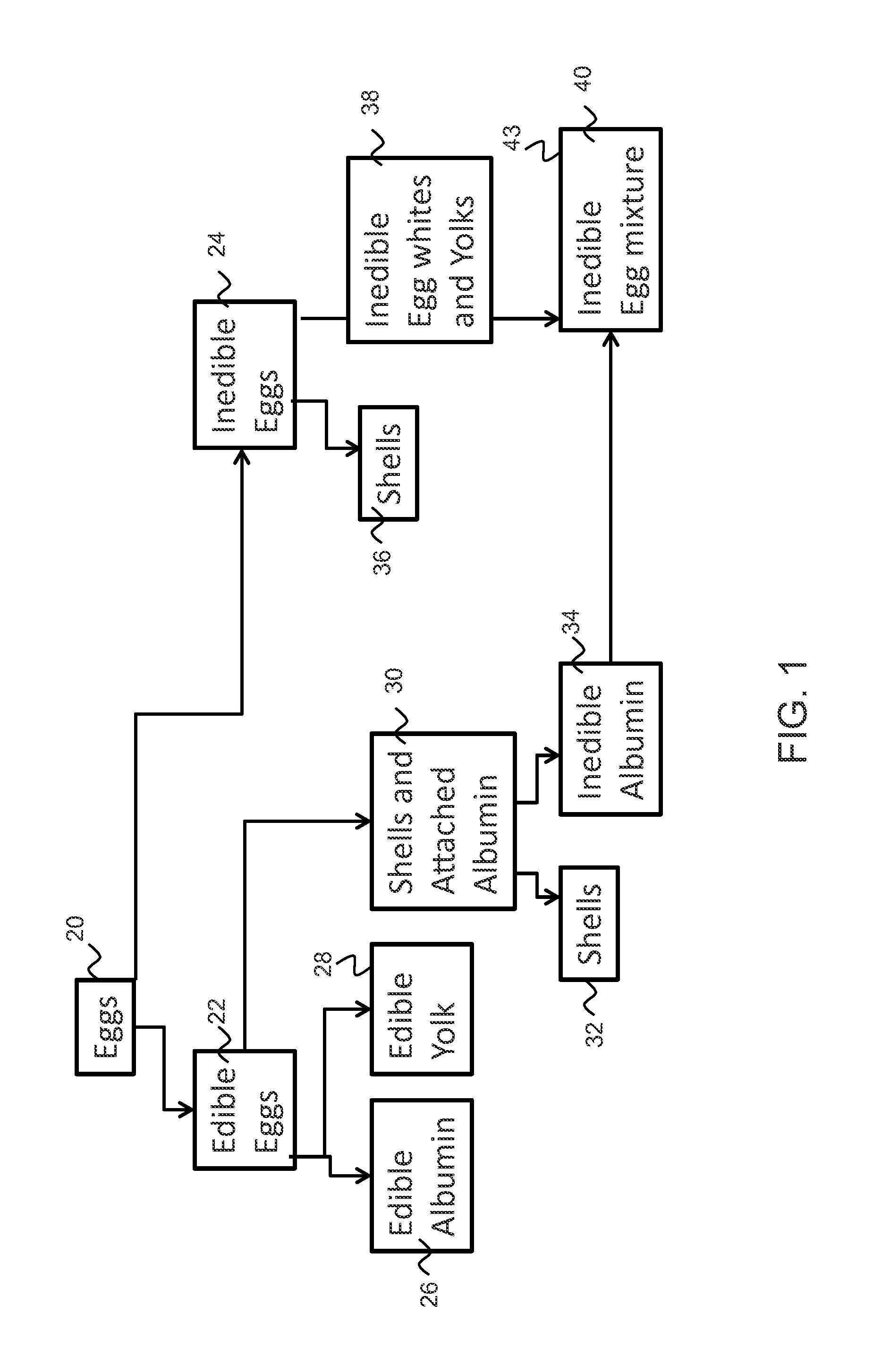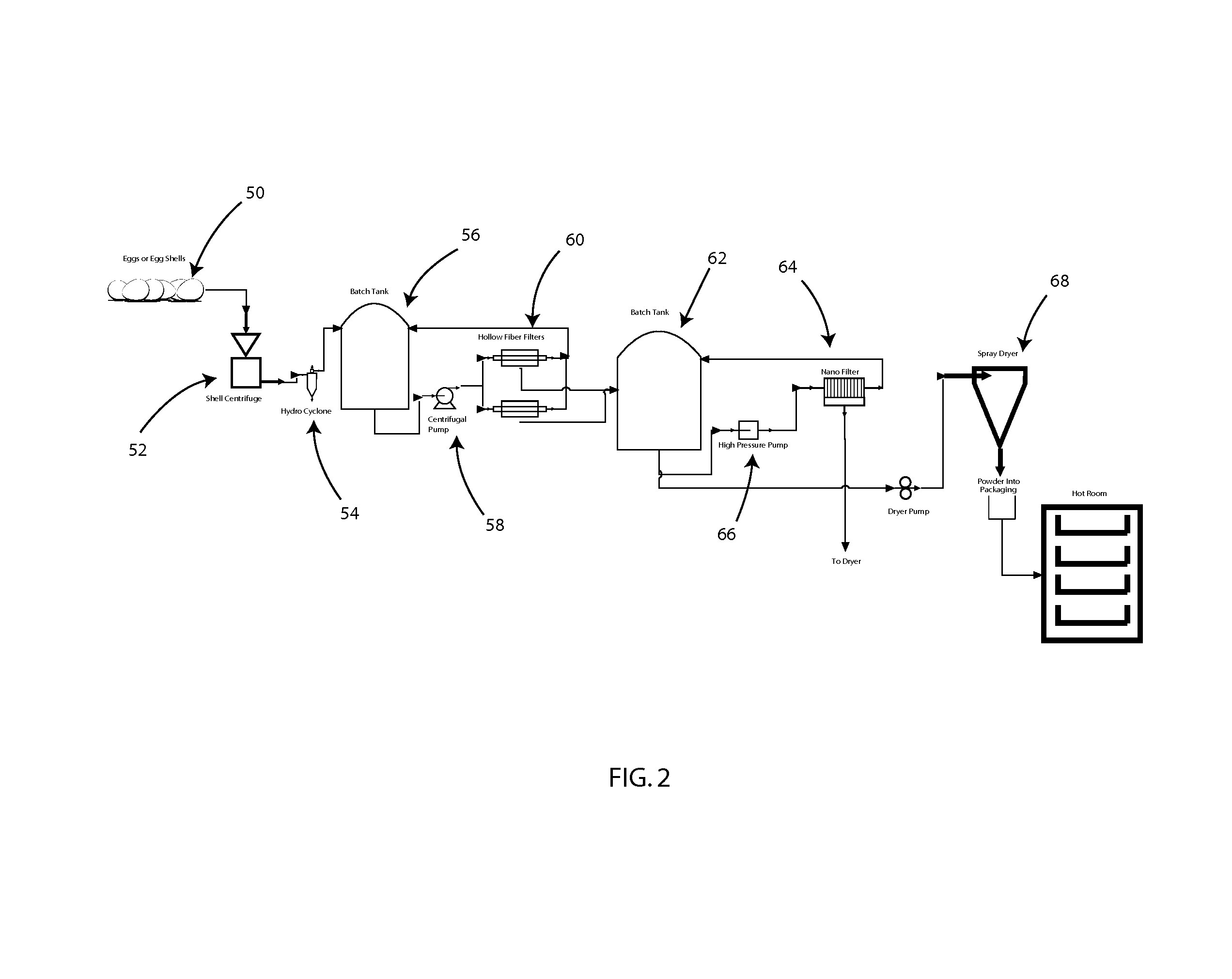Isolated egg protein and egg lipid materials, and methods for producing the same
a technology of egg yolk and lipid material, which is applied in the field of processing eggs, can solve the problems of insufficient physical limited methods of separating egg components, and insufficient separation of egg yolk and egg whi
- Summary
- Abstract
- Description
- Claims
- Application Information
AI Technical Summary
Benefits of technology
Problems solved by technology
Method used
Image
Examples
example
[0089]The following example was conducted: An egg mixture from egg breaking spinnings comprising 11.07% solids, 2.63% fat and 7.18% protein was passed through a membrane assembly comprising four loops with 32 vessels having a pore size of 0.2 um, at a base pressure of 3 psi and one loops at 8 psi boost and 3 loops at 7 psi boost, at a temperature of between 63 and 71 degrees and a flow rate of 18 gallons per minute and diafiltration water added at a rate of 2.5 gallons per minute. This configuration produced a permeate of 4.24% solids testing to 3.13% protein and 0.07% fat at a rate of 15.8 gallons per minute. The concentrate flow comprised 28.14% solids being 9.44% fat and 17.11% protein at a rate of 5 gallons per minute, indicating a yield of 38% of the available protein.
PUM
| Property | Measurement | Unit |
|---|---|---|
| Length | aaaaa | aaaaa |
| Fraction | aaaaa | aaaaa |
| Fraction | aaaaa | aaaaa |
Abstract
Description
Claims
Application Information
 Login to View More
Login to View More - R&D
- Intellectual Property
- Life Sciences
- Materials
- Tech Scout
- Unparalleled Data Quality
- Higher Quality Content
- 60% Fewer Hallucinations
Browse by: Latest US Patents, China's latest patents, Technical Efficacy Thesaurus, Application Domain, Technology Topic, Popular Technical Reports.
© 2025 PatSnap. All rights reserved.Legal|Privacy policy|Modern Slavery Act Transparency Statement|Sitemap|About US| Contact US: help@patsnap.com


